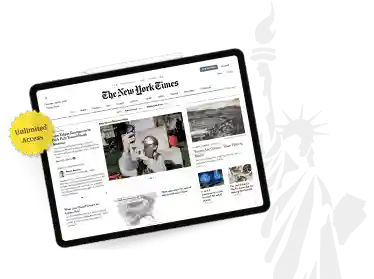The government has withdrawn the lateral entry scheme under pressure from political forces complaining it would reduce opportunities for “backward classes” to serve in higher levels of government. In its defence, the government’s supporters point out that lateral entry had been proposed by the 2nd Administrative Reforms Commission during the United Progressive Alliance (UPA) era. Also, the Congress has been appointing lateral entrants on an ad hoc basis at very high levels whenever it was in power. The aim of the lateral entry scheme of the 2nd Administrative Reforms Commission, which the current government has followed, was to inject new competencies at the level of joint secretaries in the government.
The suitability of the lateral entry scheme cannot be judged by who came up with the idea. It must be evaluated based on whether it is the right solution for improving governance and the well-being of citizens. Governments of all countries must solve many societal, environmental, and economic problems. These are listed in the 17 Sustainable Development Goals (SDGs) that all governments have agreed to achieve by 2030. Fundamentally, these goals aim to increase the pace of inclusion of people left behind by the free market juggernaut and to reverse the environmental damage it is causing.
The Indian economy has become one of the most unequal in the world. Citizens from all religions and castes are demanding reservations for opportunities. A majority is being left behind. The number of people wanting protection of their rights for education and employment has crossed 50 per cent. India is also one of the most environmentally stressed countries in the world, with depleting sources of fresh water, the most polluted cities, and deteriorating soil in its most productive agricultural areas.
The challenge for governance in the 21st century lies in a misalignment of the institutions of the Bazaar (market), Samaj (citizens), and Sarkar (the government). Societal, environmental, and economic problems have become complex because they must be solved simultaneously. Specialists aiming to solve only environmental problems can cause social and economic harm. Economists aiming to solve only economic problems of slow growth and balanced budgets, using models that treat social and environmental conditions as externalities, cannot solve the combination of problems listed in the SDGs
A hundred years ago, between the two World Wars, an unbridled Bazaar, insufficiently regulated by Sarkar, created a crisis for Samaj in Western countries. The Sarkar had to step in to improve the ease of living by providing social security and public services to Samaj, while also reducing the ease of doing business and breaking up monopolies in the Bazaar. Fifty years later, inflation and stagnation of economic growth, caused by the disruption of global oil supplies, required a readjustment of the relationship between the Bazaar and Sarkar. President Ronald Reagan declared that “government is not the solution; it is the problem.” The history of ideological conflict finally ended, according to Francis Fukuyama, with the victory of the Washington Consensus and the collapse of the Soviet Union in 1991. Socialism declined; capitalism surged.
Heads of governments in all countries are given the freedom to choose senior functionaries who they trust, whether it is the US or French Presidents or the British or Indian Prime Ministers. Mitu Sengupta has explained in (“From ‘Hard Sell’ to ‘Soft Sell’: The IMF, World Bank and Indian Liberalisation”; World Affairs, Vol 14 No 1, Spring 2010) how the Washington ideology of pro-market economic reforms was embedded into the Indian polity through lateral placements of economists who had served in the World Bank and the International Monetary Fund, and PhDs in economics from Western universities, into high level positions in finance and economic institutions in the country — such as chief economic advisors, chiefs of the national planning institution, and governors of the Reserve Bank. This practice has continued through both UPA and National Democratic Alliance regimes. The ideologies of the Bazaar have been guiding India’s Sarkars since the 1980s. The present government has also appointed lateral entrants to high-level positions to guide its economic policies, such as chief economic advisor, vice-chairman of the NITI Aayog, deputy governors of the Reserve Bank, and the chairman of the Finance Commission, who advocate the same economics.
The Washington Consensus’ ideology of “minimum government” has caused societal and environmental problems that require urgent reforms. A realignment is necessary among the institutions of the Bazaar, Sarkar, and Samaj. The Sarkar is required to regulate the animal spirits of the Bazaar and to harness its power to increase the ease of living for all citizens (Samaj), especially the poorest and least powerful. The Sarkar should not keep pumping up economic growth with the same approach that has caused environmental and social problems and hope that an invisible hand will solve them. The Sarkar needs new competencies to manage multi-faceted systems’ improvements, to enhance the health of society, the environment, and the economy simultaneously
Since the European Enlightenment in the 16th century, science and industry has advanced by breaking complexity into components with specialists in each. Domain specialists know more but about less of the whole. None can see the whole picture. Therefore, solutions by specialists in one domain backfire in others. Designers of governance reforms should go back to the drawing board and rethink the lateral entry scheme. The government needs policymakers and implementers who are not intimidated by complexity, but who understand and embrace it, and produce multi-disciplinary solutions. The government needs systems thinkers at higher levels of government, not more domain experts. All functionaries in senior positions should be trained in systems thinking.
Finally, the business of business must no longer be only about business. Even managers of private enterprises, who are trained to focus on the growth and profits of their enterprises, should be trained in systems thinking and systems acting to improve the well-being of society and the environment. The time has come for a paradigm shift. The 50-year cycle of the Washington Consensus’ free market ideology in the governance of economies is ending, even in the US.
The writer is the author of Shaping the Future:A Guide for System Leaders, and a former member, Planning Commission










)

